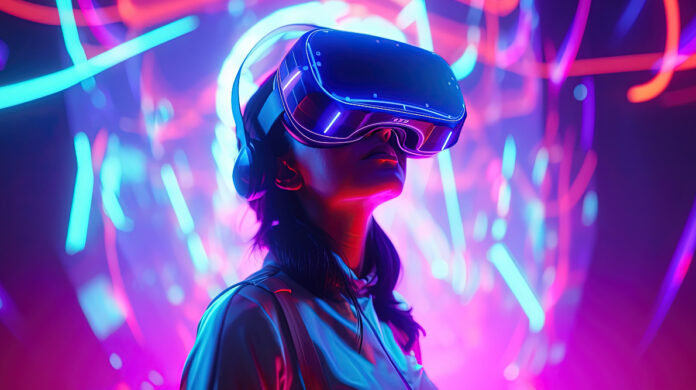Nick Booth asks Donald Butts of InterDigital about potential issues and what is being done to address them
6G seems to go head-in-helmet with dubious perceptions. There’s virtual, augmented reality and mixed reality, all delivered on a cloud of marketing budget reality, financial compromise reality and dubious whitepaper reality. Donald Butt (pictured below), Senior Director of Technology Strategy at InterDigital, says that a known known about 6G is that it will cater for infinitely more connected sensory devices, wireless sensing and localisation technologies.

NB: Have there been neurological studies to ensure 6G doesn’t zombify future generations more than social media has already?
DB: The safety of consumers must be paramount. The Human Computer Interaction Institute of Carnegie Mellon University explored the use of 6G-enabled devices in outdoor gaming, 4D cinema, smart gym training, outdoor tourism and VR table tennis. It concluded that 6G services must meet four criteria: cognitive and physical safety, stringent privacy safeguards; and use authenticity techniques.
By cognitive safety we mean safeguarding against the mental fatigue created by over-exposure to multiple digital stimuli. This was an issue throughout the experiments, which became an increasingly prevalent one as more senses were involved. Citing Keiichi Matsuda’s concept of hyper-reality, it seems a hyper-realistic environment with gamified elements and notifications may in fact overload the user.
So the network’s [owner] needs to consider the impact of the experience on the users’ cognitive load. 6G services must ensure cognitive ‘noise’ is carefully balanced so that users don’t feel burned out by frequent use of multiple devices.
NB: What stresses people?
DB: Rising stress and heart rates are caused by slow to load web pages, according to one study last year, while Ericsson discovered that network delays in VR gaming can be three times as stressful as delays in typical PC gaming. The nature of immersive experiences means more stringent safeguards must be in place to protect users’ cognitive wellbeing.
NB: What about where the physical meets the digital?
Physical safety is a 6G issue,immersion in the digital waves can trigger nausea in some users.
NB: So, like old sea dogs, newcomers will have to develop ‘6G legs’?
DB: While technology is being trialed to avert nausea, until it is fixed it’s something developers must be aware of. There are also the physical safety aspects of bumping into or tripping over objects in the real world when immersed in a digital environment. Many headsets use sensors to warn users, but until this technology is perfected, accidents will continue. A transport company told Omdia researchers that immersive technology only works if field workers can move freely and use hands-free devices that do not interfere with their job.
NB: Is privacy a big worry and what about authenticity?
DB: Privacy is a big worry. For instance, a clothing retailer interviewed by Omdia has discontinued an AR clothing line because customer feared that illicit images could be captured as they undressed. Consumers must be reassured of the safety and security of connected and immersive devices if they are to fully engage.
People will want major assurances over the questions over authenticity, given that virtual avatars and personas have made the public aware of even more sinister developments such as deep fakes of both people and environments.
NB: Arguably the fabrications are increasing almost as fast as the media’s interest in them. For now, the demand for deep fake horror stories is exceeding the supply of real events, but that could change soon.
DB: The current generation of deep fakes lack full 3D holographic enhancements but 6G could, in theory, support them. Companies must be aware of these risks and proactively find solutions.
NB: Huawei is deeply embedded in the world’s telecoms infrastructure and it is proving impossible to fully ‘rip and replace’ its equipment. Analysts say Huawei is well advanced in 6G. Do we want our future reality to be dictated by an omnipresent, omniscient and oppressive regime?
Collaboration on technical standards is vital for innovation. Transatlantic ties have been strained…China has a distinct advantage when developing standards…We have to be careful that pushback against China could spill over into the creation of standards, impeding the important work of global standards organisations. A balance needs to be struck.
Editor’s note: Chinese firms’ involvement in standards organisations is attracting more attention.


